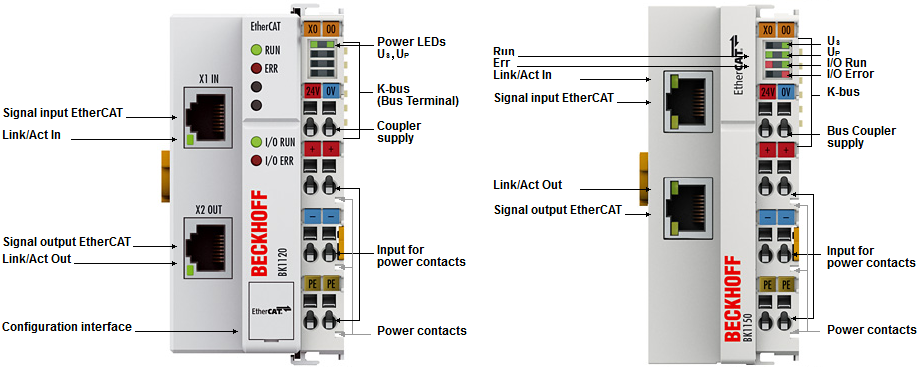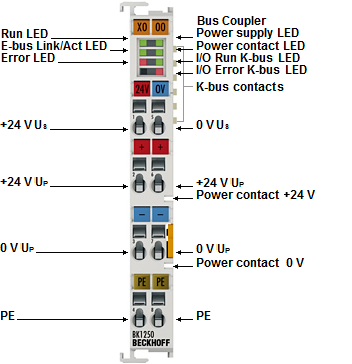Introduction
BK1120, BK1150

The Bus Couplers BK1120 and BK1150 connect EtherCAT with the tried and tested Beckhoff K-bus terminals (KLxxx). A station consists of a BK1120 / BK1150 Bus Coupler, any number of K-bus terminals (up to 64, or up to 255 with K-bus extension) and a bus end terminal. The Bus Coupler recognizes the connected terminals and automatically allocates them into the EtherCAT process image. The Bus Coupler is connected to the network via the upper Ethernet interface. The lower RJ45 socket may be used to connect further EtherCAT devices in the same segment. In the EtherCAT network, the BK1120 / BK1150 Bus Coupler can be installed anywhere in the Ethernet signal transfer section (100BASE-TX) – except directly at the switch. The Bus Couplers BK9000 (for K-bus terminals) and EK1000 (for E-bus terminals) are suitable for application at the switch.
BK1250


The BK1250 is a "Bus Coupler in the terminal housing" for mixed application of EtherCAT terminals (ELxxxx) and standard Bus Terminals (KLxxxx) in a bus station. It allows implementation of compact and cost-effective control solutions. The wide range of more than 300 available Bus Terminals (incl. special terminals) can thus be optimally combined with the communication speed and large bandwidth of EtherCAT terminals. Up to 64 Bus Terminals (with K-bus extension up to 255) can be connected to a BK1250. The Bus Coupler recognizes the connected Bus Terminals and automatically allocates them into the EtherCAT process image.